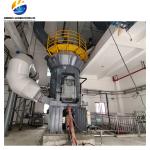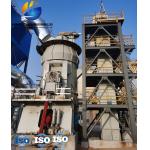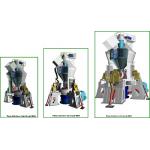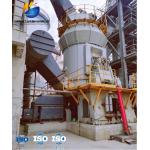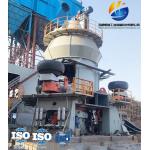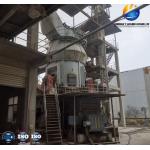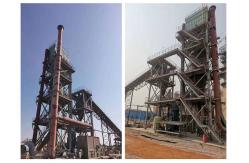Low Operating Cost Slag Grinding Plant Vertical Grinding Mill
Superfine Vertical Roller Mill
Description
Slag is a by-product of the blast furnace ironmaking process. It is
the reaction of impurities such as silica and alumina with lime to
form a molten material with silicate and aluminosilicate as the
main components. After quenching, it becomes a loose and porous
granular material, which is called blast furnace slag. Also
referred to as slag;
Slag powder is the abbreviation of granulated blast furnace slag
powder from a production point of view; from a physical point of
view, ore powder is a granulated slag powder material processed
from slag by certain equipment; slag powder is a high-quality
concrete As a result, with the continuous increase in the scale of
industrial production in my country, the discharge of slag has also
increased a lot; based on the industrial application of slag
powder, promoting the recycling of slag resources has also opened
up its application market;
Selection of slag grinding equipment:
For slag water slag Hefei Hengcheng Technology has launched several
slag vertical mills specially designed to manufacture slag powder.
Our slag vertical mills continue to introduce advanced grinding
technology in the industry, making our mill equipment more
scientific, smarter and more efficient. Environmental friendly;
【Production】: 23-220 t/h
【Slag moisture】:<15%
【Product moisture】≤1%
【Specific surface area of mineral powder】≥420㎡/kg
【Application fields】
Coal powder preparation, slag grinding, sand and gravel yard,
concrete mixing station, dry mortar, power plant desulfurization,
quartz sand, etc.
【Technical advantages】
This mill is the choice for large-scale milling projects, with the
advantages of reliable performance, high efficiency and energy
saving, environmental protection, convenient maintenance, large
unit processing capacity, and high dust collection efficiency.
【Working Principle】
The motor drives the grinding disc to rotate through the reducer,
the material falls into the center of the grinding disc from the
feed inlet, and the hot air enters the mill from the air inlet.
Under the action of centrifugal force, the material moves to the
edge of the grinding disc, and is crushed by the grinding roller
when it passes through the annular groove on the grinding disc.
Re-grinding, when the material in the airflow passes through the
dynamic and static separator, under the action of the rotating
rotor, the coarse powder falls on the grinding disc for
re-grinding, and the qualified fine powder is milled together with
the airflow and collected in the powder collecting device, which is
product. Moisture-containing materials are dried during contact
with hot gas to achieve the required product moisture.
Technical Data
Model | HVM2500 | HVM2800 | HVM3400 | HVM3700 | HVM4200 | HVM4500 | HVM4800 | HVM5100 | HVM5600 |
Grinding Table Median Diameter(mm) | 2500 | 2800 | 3400 | 3700 | 4200 | 4500 | 4800 | 5100 | 5600 |
Capacity(t/h) | 23-26 | 50-60 | 70-83 | 90-110 | 110-140 | 130-150 | 150-180 | 180-200 | 200-220 |
Raw Material Moisture | <15% |
Product Specific Surface Area | ≥420㎡/kg |
Product Moistrue | ≤1% |
Main Motor Power(kW) | 900 | 1800 | 2500 | 3350 | 3800 | 4500 | 5300 | 6150 | 6450/6700 |
Illustrate | Re:Mining slag bond index≤25kWh/t,Steel slag bond index≤30kWh/t,The
output will decrease by 30%-40% when grinding steel slag micro
power |
The slag milling process is as follows:
The first stage: drying of raw materials
According to the moisture content of the raw materials and the
moisture content requirements of the finished product, the slag
uses a dryer to remove moisture for materials with high moisture
content. Materials with low moisture content can be treated with
hot air through a hot blast stove to the mill. Through the process
of grinding and drying, the equipment investment cost and operating
energy consumption cost of the dryer can be reduced.
Stage 2: Grinding
The dried slag small pieces of material are sent to the raw
material hopper by the elevator, and then sent to the grinding
chamber of the mill evenly and quantitatively by the conveying
feeder for grinding.
Stage 3: Grading
The pulverized materials are classified by the classification
system, and the unqualified powders are classified by the
classifier and then returned to the main engine for re-grinding.
Stage 4: Collection of Finished Products
The powder that meets the fineness enters the dust collector
through the pipeline with the airflow for separation and
collection, and the collected finished powder is sent to the
finished product silo by the conveying device through the discharge
port, and then loaded into the powder tanker uniformly.
